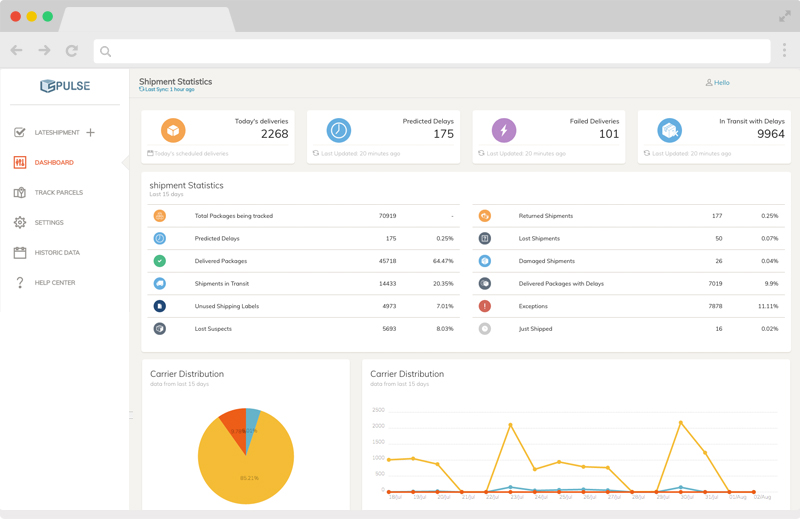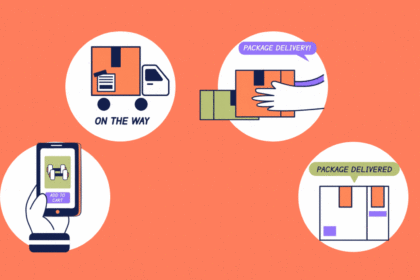Are you a small business owner? Do you ship? Do some parts of the process totally frustrate you?
If you are tired of all the opaqueness associated with the shipping process and you just want things to be simpler, I’m here to help. I’m as tired of the machinations of the shipping industry as you are.
One area which many small business owners struggle with is DIM weight.
1. Understand how DIM weight works
Unless you ship using USPS flat-rate boxes, you are going to have to deal with the concept of dimensional weight. This can be be a little confusing for those new to shipping. Dimensional weight (or volumetric weight) was introduced because light-weight, low-density packages had become unprofitable for shipping carriers due to the amount of space they occupied in relation to their weight.
DIM weight is calculated based on the formula:
Dimensional Weight = (Length x Height x Width) / DIM factor
The DIM factor is a number that can change from carrier to carrier.
The implication of dimensional weight has been that shipping packages has become more expensive. It is therefore important for you to ensure that you use the right amount and type of packaging to save on costs.
If the concept of DIM weight daunts you, worry not! Major carriers like FedEx and UPS have dedicated DIM weight calculation tools.
2. Don’t forget to negotiate with your shipping carrier (you actually can)
Many small businesses fail to realize that shipping rates are negotiable.
Don’t just settle for the rate your carrier charges you. Do a thorough comparison of the rates various carriers offer before settling in on a carrier, and then negotiate.
The carrier needs your business as much as you need their service. Inform the carrier representative of the rates other carriers offer. Tell them your options are still open. You will probably end up getting a sweet deal!
Of course, the actual process of negotiation will differ from carrier to carrier, but this is the basic way you need to go about things.
You could also consider using multiple carriers to fulfill your shipping needs. This way, you will end up getting the best deal each carrier has to offer for your needs. For instance, you could use one carrier for domestic shipments and the other for cross-border shipments.

3. Make sure to include the cost of shipping in the final bill
This is something many small businesses overlook. Explicitly state and include the cost of shipping on the billing page. If you don’t, the burden of paying for shipping will fall on you. Another thing that is possible is that the customer will be required to pay for shipping on delivery. This can lead to a bad delivery experience, and the customer may choose to not buy from you again.
Also, if the shipping price varies from region to region or you plan on shipping internationally, make sure you include the relevant rates on the billing page.
4. Audit your shipping invoices regularly
Many small e-commerce businesses seldom do this. And what is the outcome? They end up losing a lot of money.
The thing is, shipping carriers mess up with their billing from time-to-time. Unless you audited your shipments, you would never know. Regularly auditing your shipping invoices helps you evaluate the service you are receiving. This can help you get your carrier to improve the quality of their service and also be a negotiating tool.
Auditing can be a pain if done manually, but there are automated options to make your life easier. LateShipment.com is one of them. Check us out. We’re waiting.
Auditing shipments gives you the opportunity to claim refunds for service failures. What are service failures, you ask? Let me explain.
Service failures are when shipping carriers mess up. There are over 50 service failure types. Some of the easy ones to identify are late deliveries, products damaged on delivery, and lost packages.
When shipping carriers mess up, they owe you money. But they don’t just own up and hand over the money to you. By design, they have a complicated process by which you need to apply for refunds within a particular time period.
Thankfully, you can be at ease using automated services like ours which track your shipments and watch out for service failures. We get your refunds for you and credit them back into your account. How cool is that?
5. Track your orders in real time
Manually tracking multiple orders in real time can be cumbersome. It’s a hassle to enter the tracking number of every single package you’ve dispatched into the portal of your shipping carrier to determine status.
A service like Pulse can help you in this regard. Pulse is a free service that is part of our offering. It works with all your shipping carriers to give you real-time updates on the status of your deliveries. It provides a great deal of insight into the shipping process, so you can stay ahead of delays or inform your customers about them. This way, you can ensure customer satisfaction regardless of the issues that occur during shipping.
A view of the Pulse Dashboard

6. Be an early adopter of technology
Stay informed of the latest tech trends affecting shipping. Be an early adopter of technology. This will give you an advantage over your competitors and also help you stay on top of challenges associated with tracking and auditing shipments. Scaling becomes easier when you move to an tech-driven process.
Automation is already beginning to play a big role in the shipping industry. Automated parcel auditing and shipment tracking is a growing industry in and of itself. Automation in these areas helps free up valuable human resources so that core business areas can be given the attention they require.

7. Package well enough to avoid damage
This may seem like a no-brainer, but a lot of damage is possible in transit. Your parcel will undergo a lot of stress during the shipping process. It is one among thousands of others that require shipping. In most cases, those who handle it will not give it special consideration.
Many young businesses fail to factor this when packaging their products. The amount of shock absorbent material required to protect your product is probably more than you might imagine.
Be generous rather than frugal with the amount of protective packaging you use. You will not regret it. The last thing any small business owner wants to hear from their customer is that the product shipped was damaged when received.

A Little about LateShipment.com
Do you have a strategy when it comes to handling parcel delays and driving more meaningful customer engagement in the last-mile? We at LateShipment.com work hard to make “parcel shipping & delivery” transparent and help businesses be fully in control of their last-mile success.
Some of our high-impact offerings are:
- Automating refund claims from your shipping carriers for service failures to help you save money on shipping.
- Giving you full control over delivery delays that harm your brand and sales. You can now predict parcel delays and even fix them by keeping customers informed.
- Reporting at every stage of “shipping & delivery” to enable you with critical supply-chain insights.
The value we add to businesses is most evident when experienced first-hand. Learn more about our solution here.









